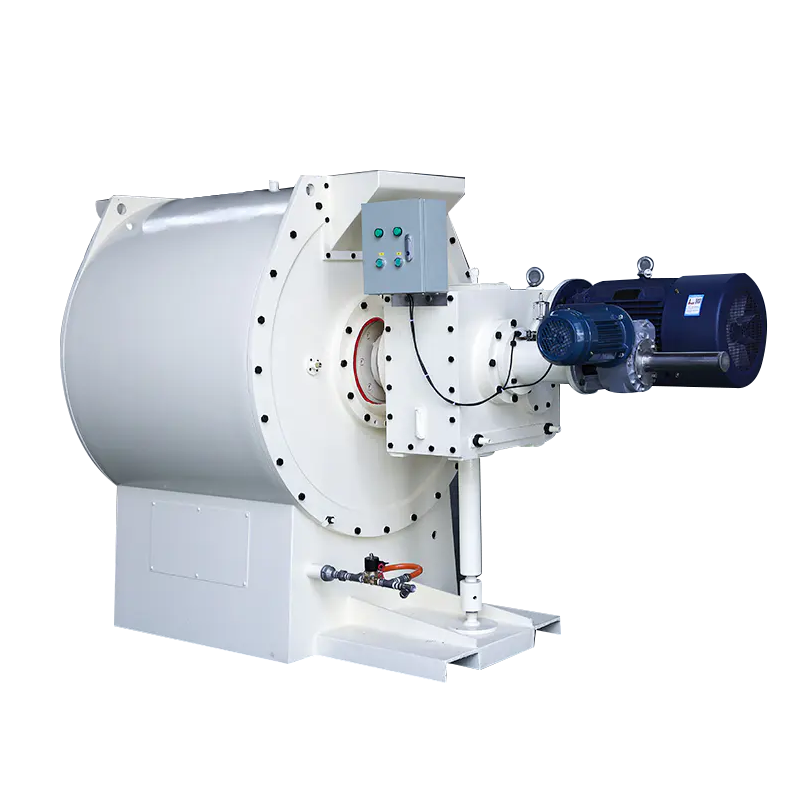The industrial chocolate conche is a core equipment that converts basic raw materials such as cocoa beans, sugar, and milk powder into high-quality chocolate base materials through precise structural design and micron-level grinding technology. Its working mechanism deeply integrates the wisdom of mechanical engineering and the ingenuity of food technology. From the precise transmission of mechanical force to the microscopic control of particle size, each link reflects the ultimate pursuit of chocolate quality and becomes the key technical link between raw materials and deliciousness.
The structural design of the conche is the physical foundation for achieving quality carving. As the mainstream structures, the drum type and the trough type are designed around the two core needs of high-precision grinding and efficient mixing. The drum type refiner uses a horizontal closed drum as a carrier, and the rotation of the drum wall drives the internal grinding elements and the material to produce relative movement. This design not only uses centrifugal force to strengthen the contact between the material and the grinding surface, but also can accurately adjust the internal temperature through the temperature control system of the drum wall; the tank type refiner is based on an open or semi-closed tank body. The built-in stirring device and the grinding roller work together to construct a three-dimensional motion space. The spiral or paddle structure of the stirring blade forms a complex eddy field when rotating to ensure that the material circulates without dead ends in the equipment. Both structures use high-strength alloy materials to build core components. The surface of the grinding roller is specially hardened or engraved with fine lines to enhance the wear resistance while improving the cutting ability of the material. The angle and speed design of the stirring blade are optimized by fluid mechanics to achieve the best material convection effect.
Micron-level grinding process is the core means of shaping the quality of the refiner. When the cocoa material enters the equipment, the grinding roller controls the distance between the rollers and the rollers and the inner wall at micron-level accuracy through a precise gap adjustment system. Under high-speed rotation, the surface of the grinding rollers and the cocoa particles and sugar crystals undergo high-frequency mechanical collisions and shearing. This force is not a simple physical crushing, but a precise control of particle size through a multi-stage grinding system. In the initial stage, the coarse grinding rollers crush the raw materials to hundreds of microns, laying the foundation for subsequent refinement; as the materials circulate in the equipment, the fine grinding rollers further refine the particles to the ideal range of 20-30 microns. This fineness standard has been verified by long-term process verification, which can not only eliminate the granular feeling of chocolate when it enters the mouth, but also retain a moderate solid structure to maintain the taste level. For example, the refinement of sugar crystals ensures the uniform release of sweetness and avoids local oversweetness or sandy feeling; and the full grinding of cocoa particles promotes the full exposure of internal flavor substances, creating conditions for subsequent flavor fusion.
The coordinated control of mechanical force and process parameters gives the refiner the ability to deeply regulate quality. The shear heat generated during the grinding process is not a simple side effect, but is cleverly transformed into a process booster: moderate temperature rise causes the melting of oil components such as cocoa butter to form a natural lubricating medium, reduce the internal friction of the material, and assist in further refinement of the particles; at the same time, with the sharp increase in the specific surface area of the particles, the flavor substances such as polyphenols and volatile aldehydes in the cocoa beans are fully in contact with raw materials such as sugar and milk powder, causing physical adsorption and initial fusion between molecules. The refiner precisely controls the intensity and duration of this process through the linkage adjustment of the temperature control system and the stirring speed - too high a temperature will cause the flavor substances to volatilize, and too low a temperature will affect the fusion efficiency; stirring too slowly can easily cause uneven local grinding, and too fast may cause over-grinding. This precise control of process parameters ensures that the chocolate forms a unique flavor precursor and delicate texture during the grinding stage.
In actual production, the process wisdom of the refiner is reflected in the dynamic balance of complex variables. The equipment monitors parameters such as material viscosity, temperature and grinding pressure in real time through sensors, and feeds back to the control system for intelligent adjustment. For example, when it is detected that the viscosity of the material decreases due to the melting of cocoa butter, the system automatically adjusts the grinding roller gap and stirring speed to maintain the best grinding efficiency; when it is close to the ideal grinding fineness, it slows down the grinding intensity by reducing the speed to avoid over-processing. This adaptive mechanism not only ensures the quality consistency of each batch of products, but also allows manufacturers to flexibly adjust process parameters according to different chocolate recipes (such as dark chocolate and milk chocolate) to achieve differentiated shaping of flavor and texture.
The industrial chocolate conching machine uses precise structural design as the skeleton and micron-level grinding technology as the soul, sublimating the mixing of raw materials into a deep carving of quality.


 中文简体
中文简体 English
English Français
Français عربى
عربى


